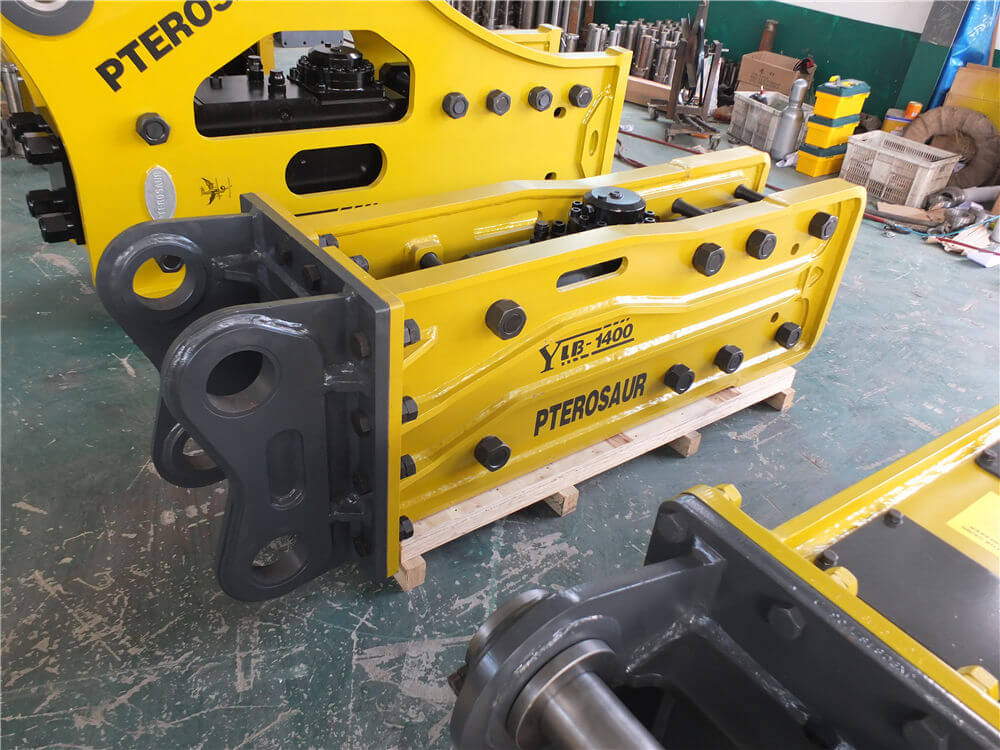Understanding Hydraulic Breakers: Installation, Maintenance, and Safety
Hydraulic breakers are essential attachments that enhance the capabilities of excavators, allowing operators to efficiently break concrete, rock, and other hard materials. In this article, we will delve into the key aspects of hydraulic breakers, including their installation, maintenance, safety precautions, and troubleshooting techniques.
What is a Hydraulic Breaker?
A hydraulic breaker is an attachment that connects to a hydraulic excavator, providing the necessary force to break through tough surfaces. The hydraulic system of the excavator powers the breaker, and when sized correctly, it optimizes system efficiency, reduces heat generation, and minimizes power loss.
Key Components of a Hydraulic Breaker
- Hydraulic System: The hydraulic breaker operates using hydraulic fluid, which transfers power from the excavator to the breaker.
- Breaker Tools: Different tools can be attached to the breaker for various applications, including chisels and blunt tools.
- Control System: The operator can control the breaker using the excavator’s hydraulic controls.
Installation of a Hydraulic Breaker
Installing a hydraulic breaker involves several steps that must be followed for safety and efficiency:
- Preparation: Before installation, ensure that the excavator is turned off and secured.
- Remove Existing Attachments: If necessary, remove any previous attachments from the excavator.
- Attach the Breaker: Position the hydraulic breaker on timber support, aligning it with the excavator’s arm. Use a break pin punch and hammer to drive the blocks into place securely.
- Connect Hydraulic Hoses: Ensure that the breaker hose connections are protected when not in use, as impurities can damage the hydraulic system.
Safety Precautions
Operators must adhere to strict safety guidelines to prevent accidents:
- Always read and understand the safety information provided in the hydraulic breaker manual before operating.
- Be aware of potential hazards, such as sudden movements of the carrier, which can cause serious injury.
- Regularly inspect the hydraulic system for leaks or damages and maintain proper oil viscosity (20-40 cSt) to ensure optimal operation.
Maintenance and Inspection
Regular maintenance is crucial to prolong the life of your hydraulic breaker. Here are some essential maintenance practices:
- Daily Checks: Conduct daily inspections of the breaker, ensuring that all components are functioning correctly.
- Hydraulic Oil Maintenance: Monitor the viscosity of the hydraulic oil and replace it if it exceeds 1000 cSt or falls below 15 cSt.
- Repairs: Address any damages immediately. Overloads can occur if the hydraulic breaker operates outside of recommended pressure and delivery rates.
Troubleshooting Common Issues
- Overloading: If a hydraulic breaker shows signs of overload, it is often due to incorrect pressure settings. Check the carrier’s hydraulic delivery and adjust as necessary.
- Poor Performance: If the breaker is not performing well, inspect the hydraulic connections and oil levels. Ensure that there are no blockages in the system.
Conclusion
Hydraulic breakers are vital tools in construction and demolition, offering efficiency and power when breaking through tough materials. By understanding proper installation, maintenance routines, and safety practices, operators can ensure that their hydraulic breakers perform optimally while minimizing risks. Always refer to manufacturer manuals for specific instructions and guidelines tailored to your hydraulic breaker model.



































